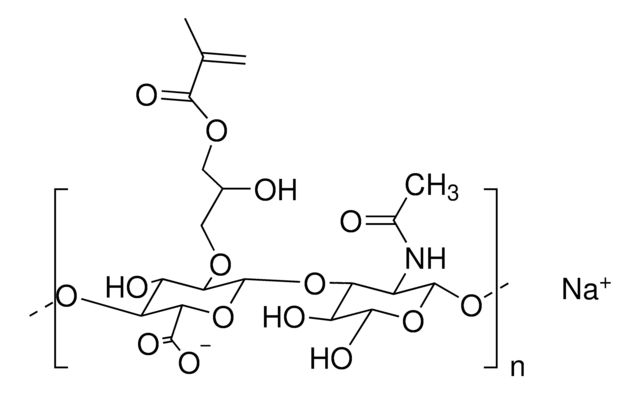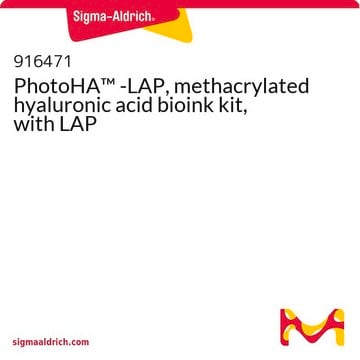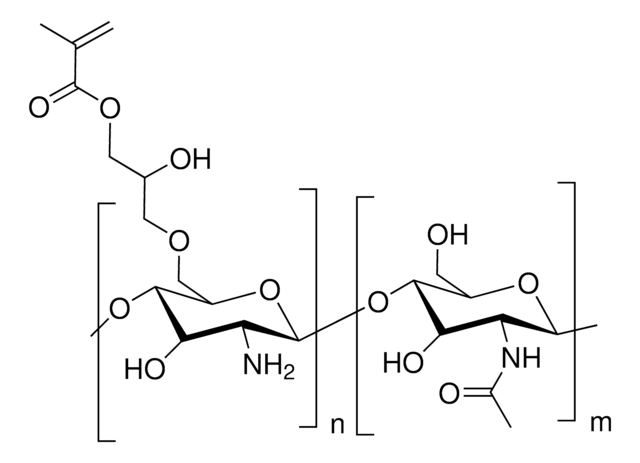924490
Hyaluronic acid methacrylate
Low Viscosity, Low Endotoxin, 0.2 um sterile filtered, 0.2 μm, sterile-filtered
Synonym(s):
HAMA, Hyaluronan, Hyaluronic acid, MeHA
About This Item
Recommended Products
Quality Level
description
Validation : HNMR at 40°C
sterility
sterile-filtered
form
(Solid chunks, fibers or powder)
impurities
≤10 CFU/g Bioburden (Fungal)
≤10 CFU/g Bioburden (Total Aerobic)
100 EU/g Endotoxin
color
white to pale yellow
particle size
0.2 μm
storage temp.
2-8°C
Looking for similar products? Visit Product Comparison Guide
Application
Packaging
Storage Class Code
11 - Combustible Solids
WGK
WGK 3
Flash Point(F)
Not applicable
Flash Point(C)
Not applicable
Certificates of Analysis (COA)
Search for Certificates of Analysis (COA) by entering the products Lot/Batch Number. Lot and Batch Numbers can be found on a product’s label following the words ‘Lot’ or ‘Batch’.
Already Own This Product?
Find documentation for the products that you have recently purchased in the Document Library.
Articles
Engineered ECMs enhance immune therapy in cancer treatment by supporting cells and tissues and modulating immune response. They improve immune cell maturation, expansion, and regulation through biomaterial manipulation, acting as frameworks or carriers for enhanced tumor immunotherapy.
Engineered ECMs enhance immune therapy in cancer treatment by supporting cells and tissues and modulating immune response. They improve immune cell maturation, expansion, and regulation through biomaterial manipulation, acting as frameworks or carriers for enhanced tumor immunotherapy.
Engineered ECMs enhance immune therapy in cancer treatment by supporting cells and tissues and modulating immune response. They improve immune cell maturation, expansion, and regulation through biomaterial manipulation, acting as frameworks or carriers for enhanced tumor immunotherapy.
Engineered ECMs enhance immune therapy in cancer treatment by supporting cells and tissues and modulating immune response. They improve immune cell maturation, expansion, and regulation through biomaterial manipulation, acting as frameworks or carriers for enhanced tumor immunotherapy.
Our team of scientists has experience in all areas of research including Life Science, Material Science, Chemical Synthesis, Chromatography, Analytical and many others.
Contact Technical Service








